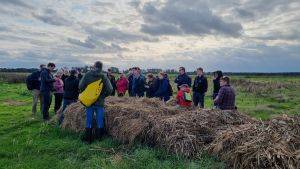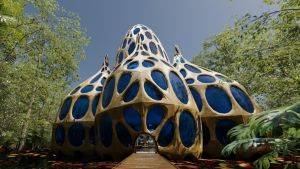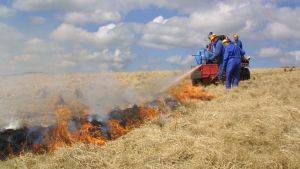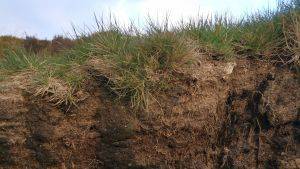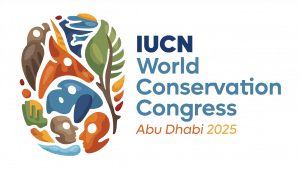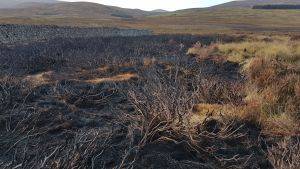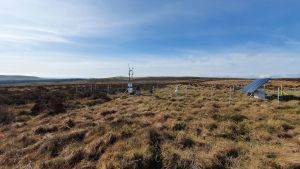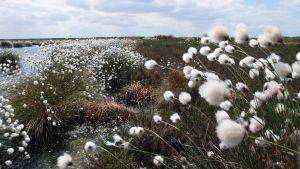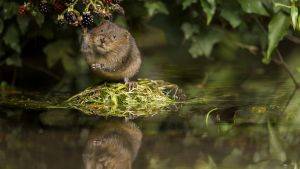SCaMP 2
Introduction
SCaMP is a partnership between United Utilities, the RSPB, local farmers and a wide range of other stakeholders, including Natural England and the Forestry Commission. It is an ongoing programme (2005-2015) that aims to restore and enhance water catchment and moorland areas, and to introduce more sustainable land management practices.
Description
The primarily moorland project area covers 56,385 ha of United Utilities owned catchment land in North West England, 17,000 ha of which is designated as SSSI. Like many upland areas in Britain, much of the land in SCaMP consists of peaty, wet soils. These peat soils have water regulating properties, retaining rainwater, filtering and cleaning it before it reaches reservoirs and rivers. Thus, a major ‘use’ of the land is gathering water for human consumption. Previously this land had been managed by tenant farmers for purely agricultural purposes. However, the environmental impact of these farms, and other factors, was leading to poor SSSI condition and increasingly discoloured and turbid water. By incentivising improvements in land management, the SCaMP scheme has sought to improve the condition of the SSSI’s, reduce risks to water quality, whilst also providing additional benefits through improvements in ecosystem quality.
Project Aims
After the success of SCaMP 1, additional funding was sourced to carry out further restoration work. This programme of work is similar in nature to the work carried out successfully in SCaMP 1 and is focussed on 53 farms holdings in Cumbria and Lancashire. It aims to:
- Protect and improve water quality
- Deliver government targets for SSSIs
- Enhance biodiversity
- Improve carbon and green house gas fluxes
- Ensure a sustainable future for agricultural tenants.
Restoration Delivered
The first programme of work, across 20,000 ha of land including 13,000 ha of SSSI, aimed to improve water quality, especially colour and sediment, and meet SSSI targets for favourable condition. Between 2005 to 2010, the main restoration works included:
- Re-wetting 5,500 ha of blanket bog through 85km of drain blocking
- Re-vegetating 470 ha of eroding bare peat
- Reducing grazing pressure and restoring dwarf shrubs
- Installing 200 km of fencing to allow for moorland restoration and woodland planting
- Protection of watercourses.
As a result of this work, United Utilities returned 98.6% of its SSSI land into a favourable or recovering condition. Vegetation monitoring is demonstrating improved ecological condition and raw water quality monitoring indicates that SCaMP 1 is beginning to have a positive effect for turbidity and colour.
Site Activity
SCaMP boosts the local economy by improving infrastructure and creating work in the area. The capital investment made by the project also supports the upland farming community by enabling tenant farmers to access and maximise agri-environment funding for their businesses. In addition, the improvement to the landscape has benefits for recreation and tourism. The restoration and management measures undertaken as part of SCaMP have resulted in significant improvements to water quality and nature conservation condition, as well as contributing to National Biodiversity Action Plan targets. In total, the project has brought 5.1% of England’s priority habitat Blanket Bog resource into government target condition. By working with contractors and continuing long-term SCaMP monitoring over the next five years, this project will continue to increase understanding of moorland restoration techniques. By engaging with Durham University to measure the carbon benefits, the restoration work carried out as part of SCaMP can contribute to the global search for solutions to the rise in greenhouse gases.
Project Name: SCaMP 2
Organisation / Lead partner: United Utilities
Approximate area covered: 30000 ha
Conservation Status: Site of Special Scientific Interest (SSSI)
Predominately: Upland
Peat Habitats: Blanket bog
Project Type: Restoration
Year Project Began: 2010
Project End Date: 2015

